While now nearly five years old, Adohi Hall at the University of Arkansas continues to be at the forefront of discussions on embodied carbon, standing as a prime example of the environmental benefits of mass timber construction. Through this three-part blog series, we will explore the groundbreaking research on embodied carbon through the lens of Adohi Hall, provide a detailed comparison of carbon modeling tools for architects, and offer an insightful analysis of the estimated construction and environmental costs for owners and clients in the mass timber industry.
A recent study published in May 2024 by the Fay Jones School of Architecture and the Forest Products Laboratory at the USDA Forest Service underscores the significant climate benefits of using mass timber over steel when compared to using the same building design. Adohi Hall is featured prominently in demonstrating these advantages. By utilizing Cross-Laminated Timber (CLT) and other engineered wood products, Adohi Hall showcases excellent structural performance and significantly reduces carbon emissions compared to traditional building materials.
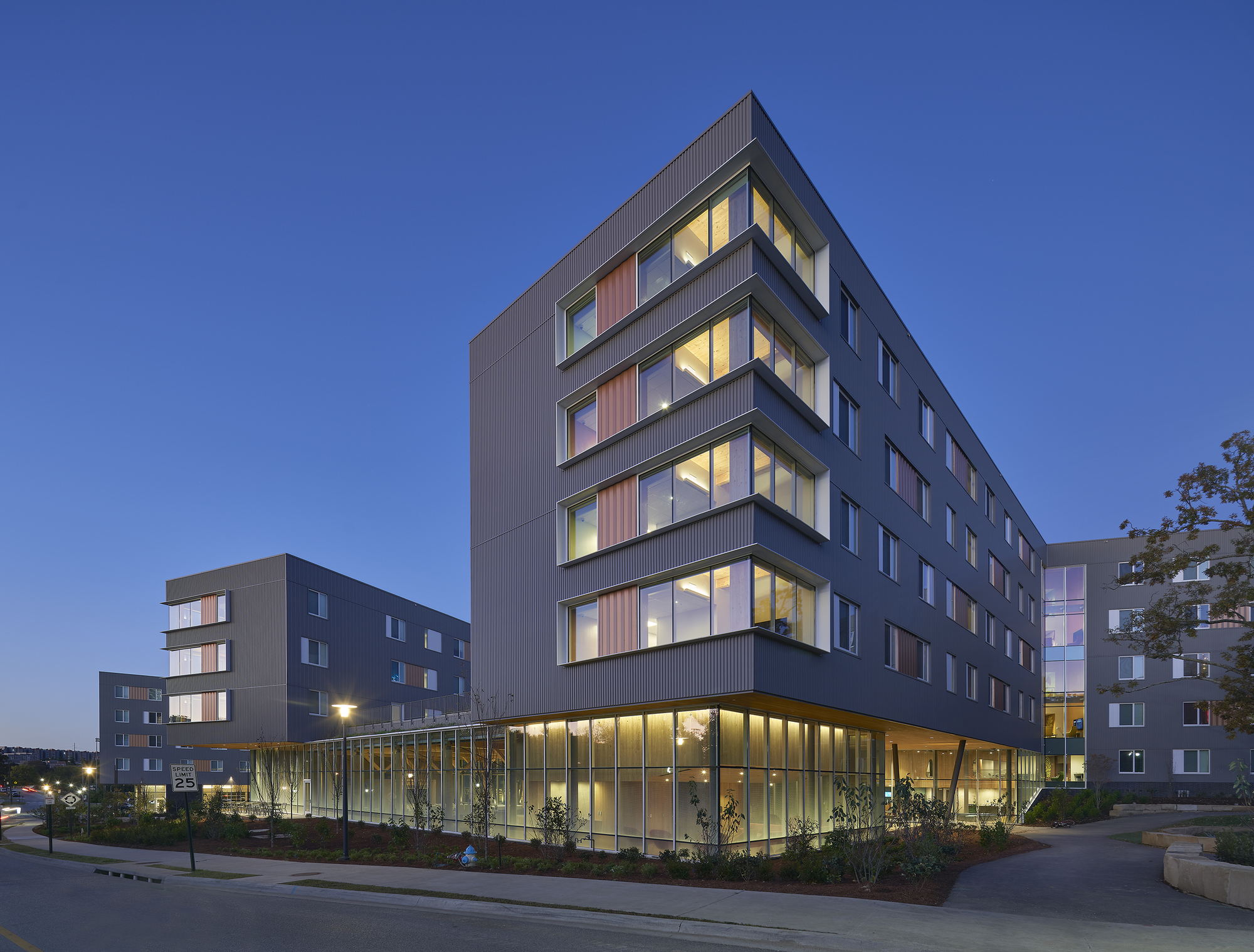
Pioneering Mass Timber Construction
When Adohi Hall was completed, it marked a significant milestone in sustainable construction being one of the largest mass timber projects in the United States and the first residence hall built using Cross-Laminated Timber or CLT. Designed by Mackey Mitchell Architects, Modus Studio, Leers Weinzapfel Associates, and OLIN, the hall integrates CLT panels, and glue-laminated wood, in concert with the conventional construction methods utilizing concrete and steel. This innovative mix minimizes the environmental impact of construction emissions while maximizing the unique properties of wood, setting a precedent for future projects.
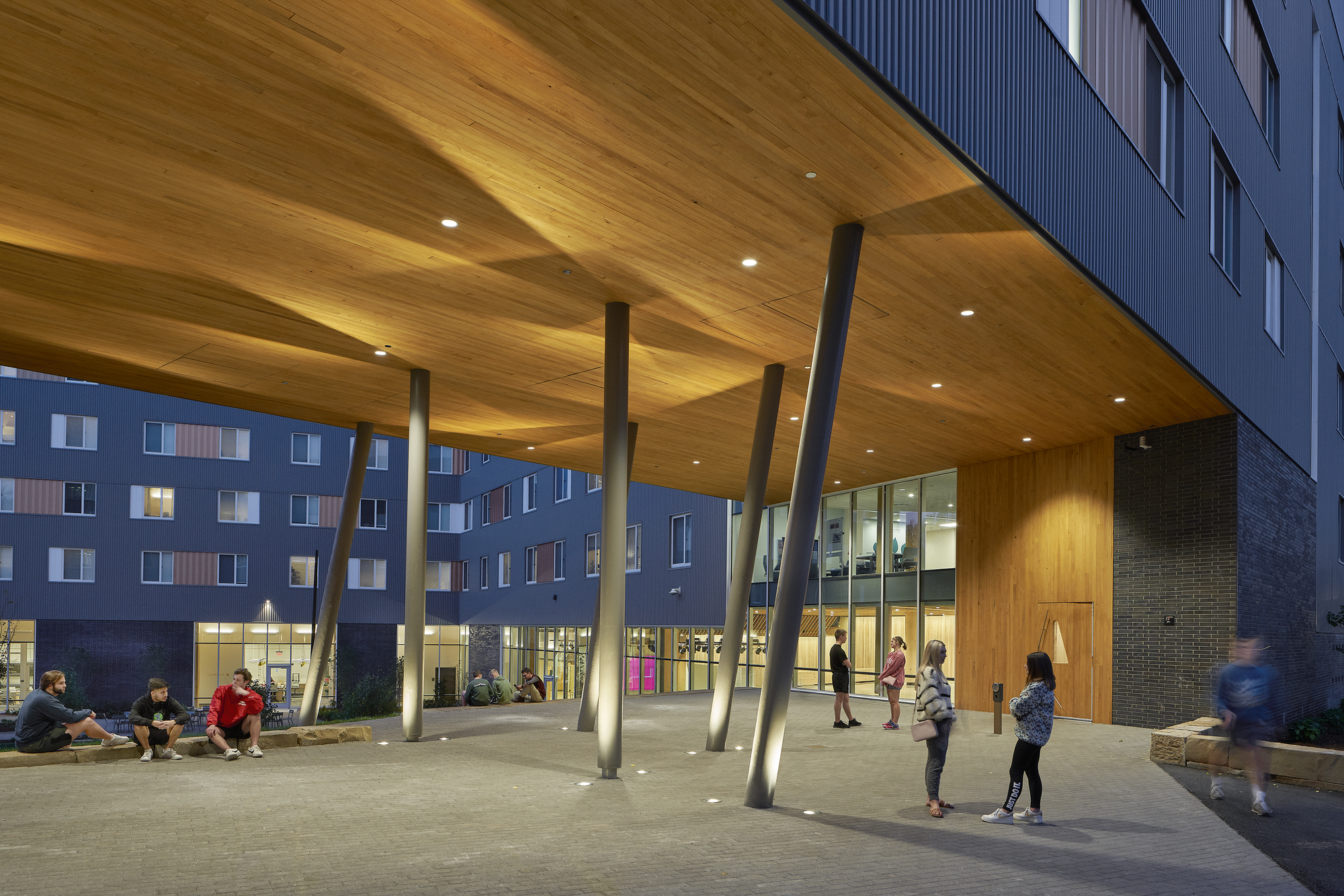
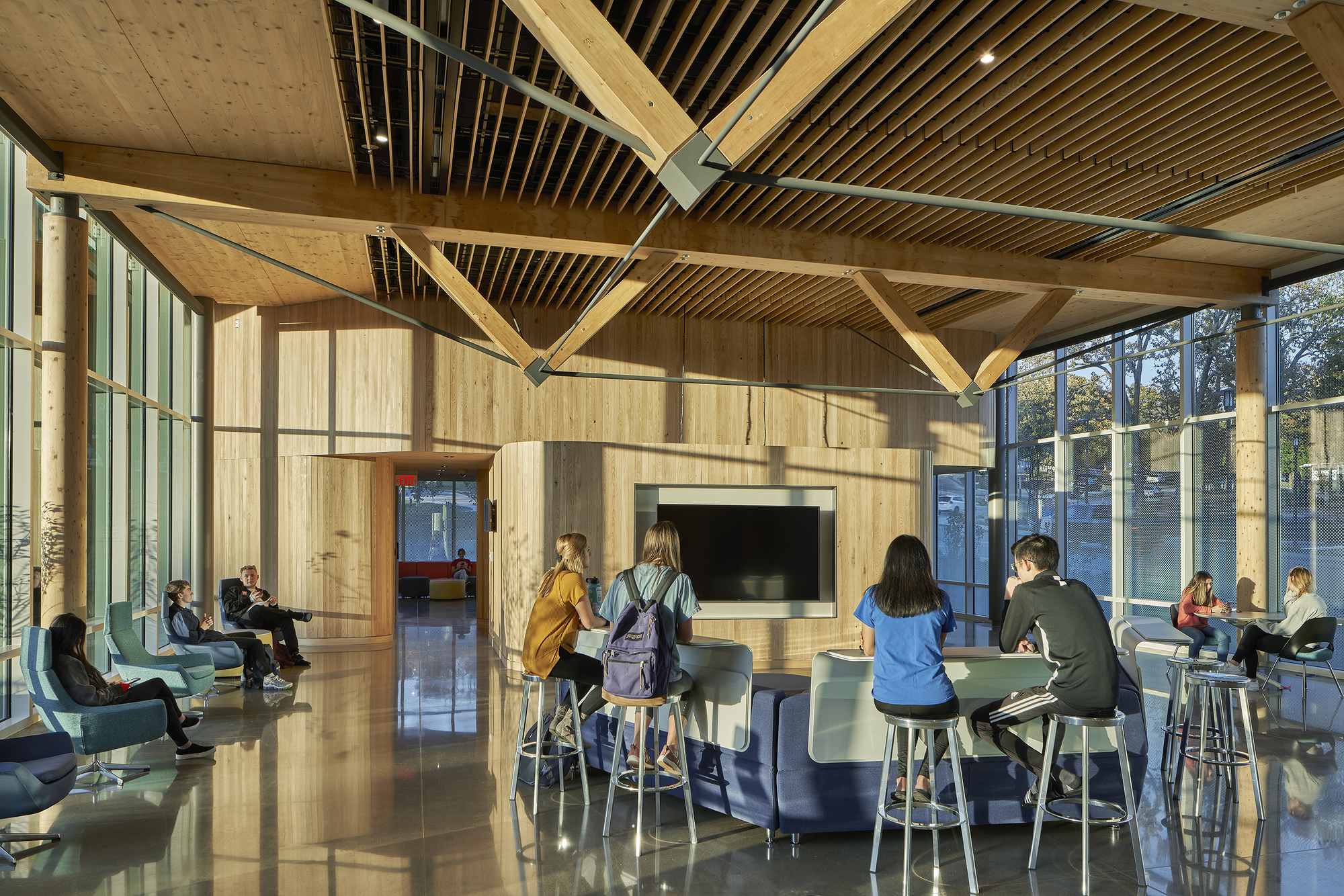
What is Mass Timber and Embodied Carbon?
Mass timber, particularly CLT, has proven to be a game-changer in construction. CLT panels are large, prefabricated wood panels that are lightweight yet incredibly strong, offering superior acoustic, fire, seismic, and thermal performance. They are also quick to install and generate almost no waste on-site.
A key environmental benefit of mass timber is its ability to store embodied carbon. Trees absorb and store CO2 as they grow. When used in buildings, this carbon remains locked in the wood, preventing it from being released back into the atmosphere. This significantly reduces overall carbon emissions, making mass timber a sustainable choice for modern construction.
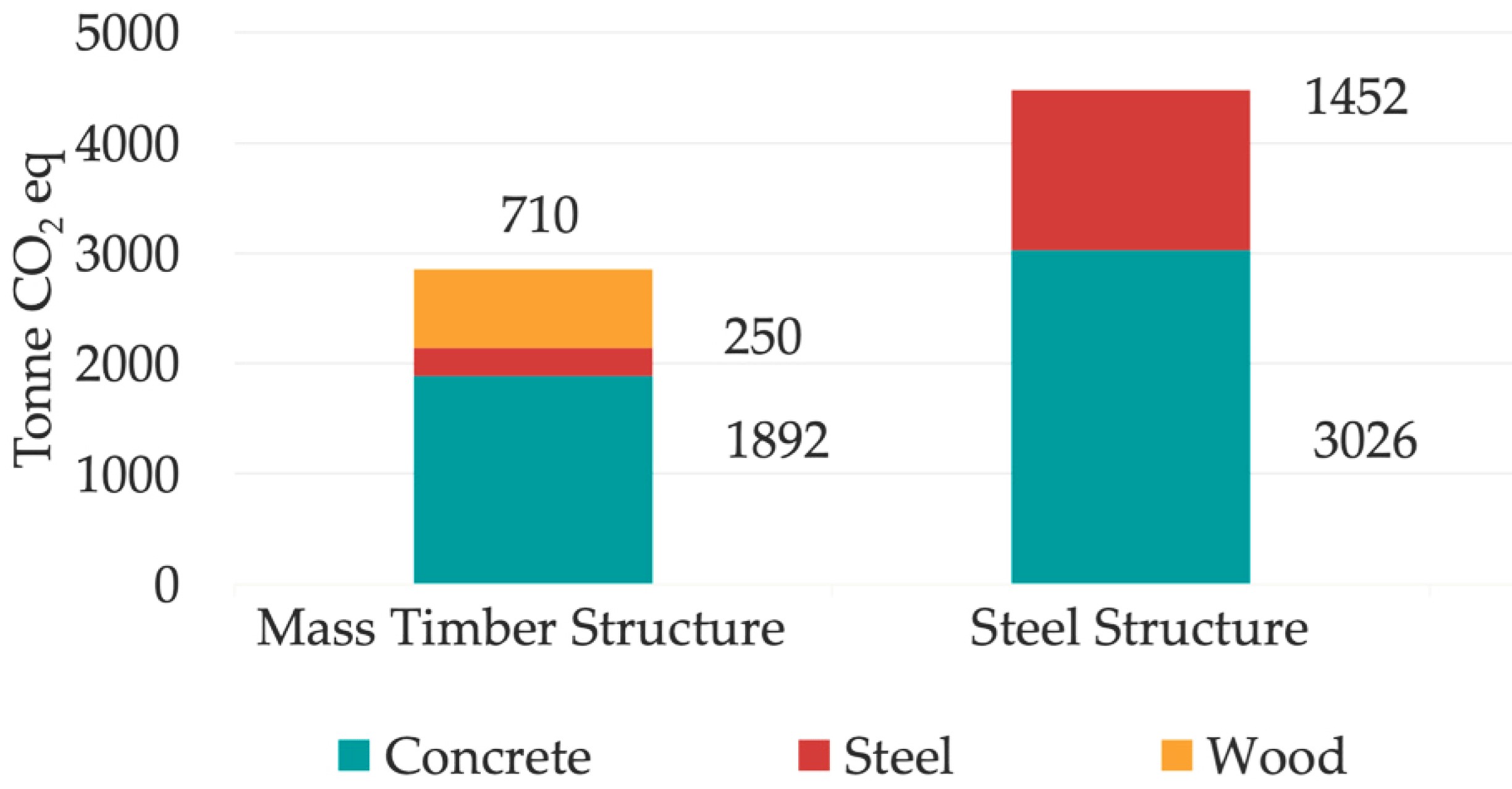
The findings of comparing green house gas emissions from two functional equivalent designs for Adohi Hall using a mass timber versus steel structure
Biophilic Design: Enhanced Wellbeing and Increased Productivity
Mass timber-based structures embody the concept of biophilia, the idea that humans inherently tend to seek connections with nature. The finished, yet exposed, wood combined with an abundance of natural lighting and views of the outdoors, contributes to a stress-reducing environment for occupants, while promoting more focused work and productivity. In education, living spaces, and beyond, the physical and mental benefits made possible by mass timber are reason enough to continue utilizing natural materials.
Study Findings
The study examined the lifecycle of materials used in Adohi Hall’s mass timber construction, covering every stage from photosynthesis and harvesting to manufacturing, transportation, and construction. This built mass-timber design was then compared to a hypothetical steel structure, evaluating the environmental impact from raw material extraction through to the final construction phase. The results were clear: Adohi Hall’s mass timber structure stored about 2757 tonnes of CO2 equivalent, effectively delaying carbon emissions over the building’s lifespan.
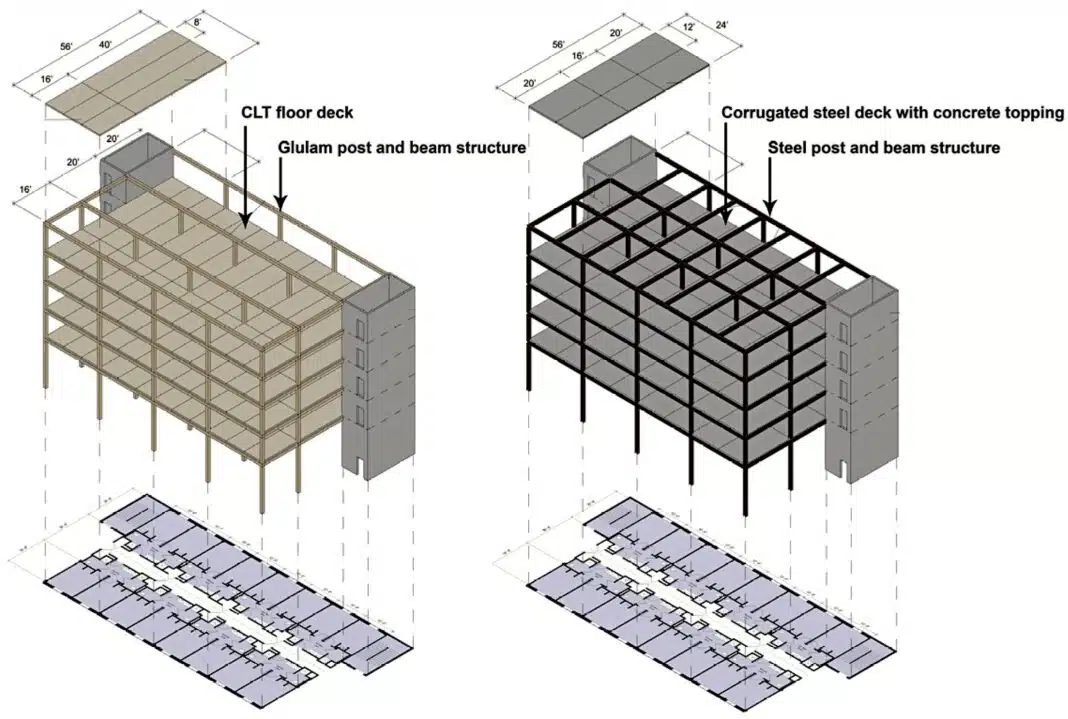
Schematic design of 3D model of Adohi Hall (LWA and MODUS Studio).
The Construction Industry’s Climate Impact
To fully realize the benefit of mass timber construction, it’s important to understand the overall impact of the construction industry on our climate. Accounting for approximately 42% of annual global CO2 emissions, it’s considered a major contributor to global CO2 emissions. Breaking it down further, building operations contribute 27%, while materials like cement, iron, steel, and aluminum add another 15%, according to Architecture 2030. These alarming figures highlight the need for further decarbonization of the industry – an effort in which mass timber can continue to make a significant impact.

The Future of Sustainable Construction
As tools for calculating embodied carbon improve, the design and construction industry can better leverage advanced materials like CLT to maximize climate benefits. Studies like the one on Adohi Hall will continue to prove these advantages and drive the adoption, helping to reduce global warming and promote low-embodied carbon development.
Projects like Adohi Hall showcase the significant environmental advantages of innovative building practices. In part two we’ll explore the various embodied carbon modeling tools and how they can further enhance the sustainability of our built environment. Stay tuned!
Sources:
WoodCentral
MDPI – Comparison of Embodied Carbon Footprint of a Mass Timber Building Structure with a Steel Equivalent
Architecture2023
ThinkWood

 By: Chris Wilson
By: Chris Wilson